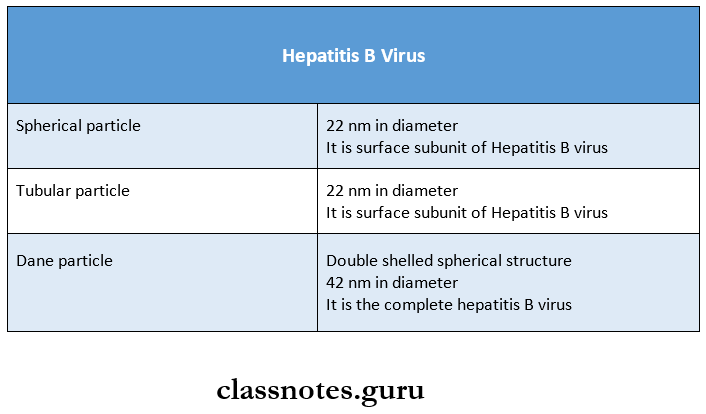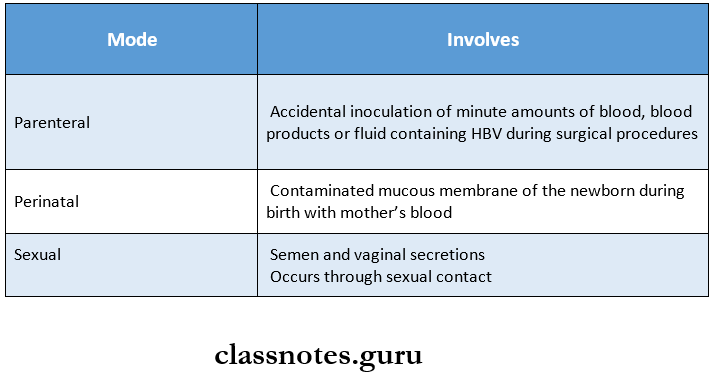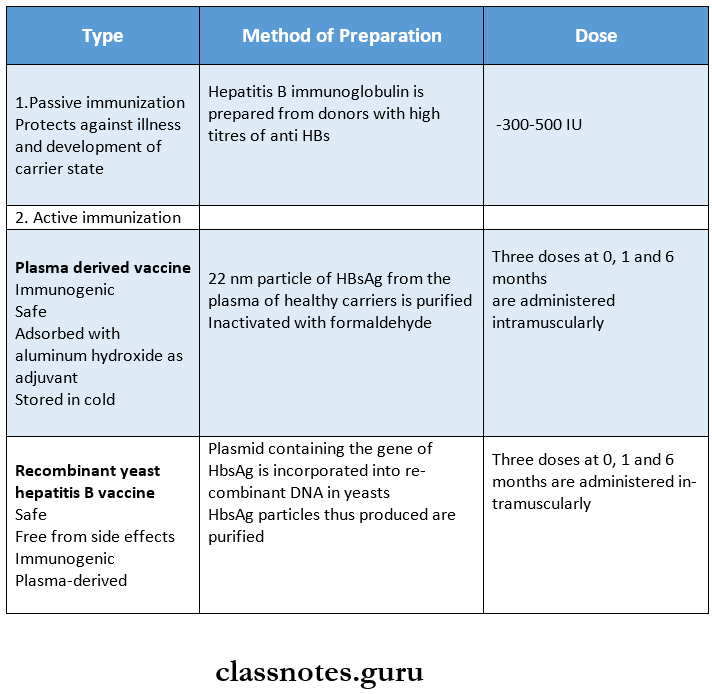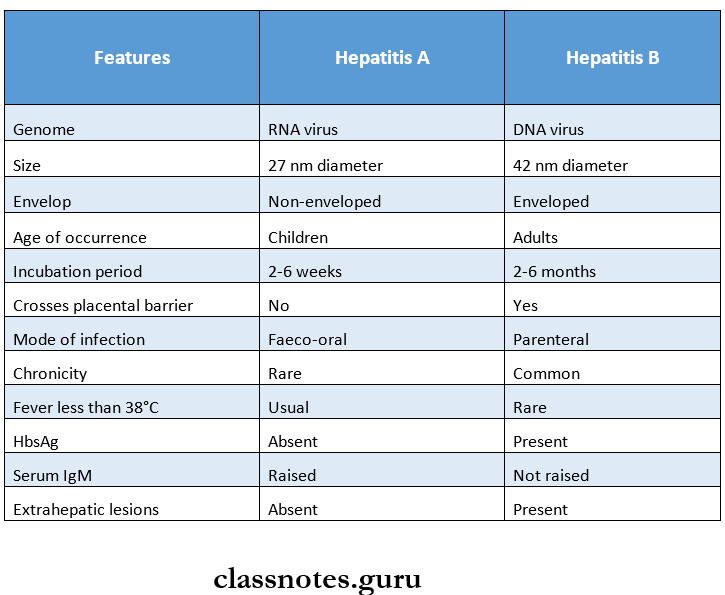Hepatitis Viruses Important Notes
1. Hepatitis Virus

Read And Learn More: Microbiology Question and Answers
Hepatitis Viruses Long Essays
Question 1. Describe the morphology, spread, prevention, and lab diagnosis of the hepatitis B virus
Answer:
Hepatitis-B Virus:
It belongs to the Hepadnaviridae family
Hepatitis-B Morphology:
- It is a complex structure
- Size: 42 nm
- It is a double-shelled particle
Hepatitis-B Structure:
1. Outer Surface Or Envelope
- It contains hepatitis B surface antigen, HBsAg.
- It encloses the inner core
2. Core
- It is an Icosahedral nucleocapsid
- Size: 27 nm
- Contains hepatitis B core antigen, HBcAg
Helminths Virology Questions and Answers
3. Genome
- It is present inside the core
- It is double-stranded DNA and DNA polymerase
- Sera of hepatitis B patients show three types of particles microscopically.

Antigenic Structure:


Spread:
There are three modes of transmission

Prevention:
1. General preventive measures
- It includes:
- Health education
- Improvement of personal hygiene
- Sterilization measures
- Screening for HBsAg and HBeAg in blood donors
- Avoiding the use of unsterile needles, syringes, or other materials
2. Immunization

Hepatitis-B Laboratory Diagnosis:

- Dark urine and yellow coloration of the sclera due to jaundice occur
- Blood shows lymphocytosis
- Prolonged prothrombin time occurs
Helminths Medical Microbiology Notes
Question 2. Describe the pathogenicity and laboratory diagnosis of the hepatitis B virus.
Answer:
Pathogenicity of Hepatitis B Virus:
- The pathogenesis of hepatitis appears to be immune-mediated
- HBV causes serum hepatitis
- Infection spreads by
- Blood transfusions
- Serum inoculation
- Sharing of syringes and needles
- Sharing of razors
- Tattooing
- Acupuncture
- Sexual intercourse
- It is more common in drug addicts, prostitutes, and homosexuals
- The virus is highly infectious, and even a minute quantity of carrier serum can transmit the infection
Helminths Class 12/Class 11 Biology Questions
Hepatitis B Virus Clinical Features:
- Incubation period- 2-6 months
- Onset – Slow, insidious, severe
- Fever is not prominent
- The course of acute HBV infection is divided into three phases:

- Extrahepatic complications include
- Urticaria
- Arthralgia
- Polyarteritis nodosa
- Glomerulonephritis
- The appearance of circulating immune complexes that bind viral surface antigen
- Some patients progress to chronic active hepatitis and cirrhosis
Hepatitis Viruses Short Essays
Question 1. Differentiate between hepatitis A and hepatitis B.
Answer:

Hepatitis Viruses Short Questions and Answers
Question 1. Danes Particles.
Answer:
- Under the electron microscope, sera from type B hepatitis patients show three types of particles
- The third type of particle is a double-walled spherical structure
- It is 42 nm in diameter
- It is the complete hepatitis B virus
- It was first described by Danes in 1970
- Hence, it is known as the Danish particle
Parasitology Short Questions on Helminths
Question 2. Quantitative rapid test for hepatitis B antigen
Answer:
The Serological tests used for hepatitis B antigens are
- DNA hybridization
- Polymerase Chain Reaction
- They detect HBV DNA
- They are highly sensitive
- They are quantitative tests
